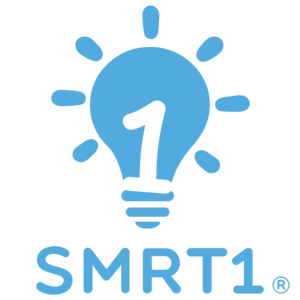In the evolving world of automated retail and dispensing technology, the terms ‘smart vending’ and ‘intelligent vending’ are often used interchangeably. This can create confusion for those exploring vending solutions. While these concepts share many technical similarities, they differ primarily in their emphasis and application focus rather than representing two completely different technologies.
While the terms “smart vending” and “intelligent vending” are often used interchangeably, understanding their different emphases can help organizations select the right solution for their needs. Smart vending prioritizes the user experience, personalization, and engagement, while intelligent vending focuses on operational efficiency, data analytics, and business optimization.
In the healthcare context, these distinctions blend together, as effective healthcare vending requires both exceptional user experiences and efficient operations. SMRT1’s technology embodies this integrated approach, providing healthcare organizations with vending solutions that are both smart (user-centric) and intelligent (operationally optimized).
By understanding these nuances, healthcare providers can better leverage automated dispensing technology to extend care, improve access, and ultimately create healthier communities.
Smart Vending: Customer Experience Focus
Smart vending places its primary emphasis on the customer experience and interaction. Smart vending machines leverage cloud connectivity to access customer shopping trends and preferences, using this information to create personalized, engaging experiences. Key characteristics of smart vending include:
- Interactive touchscreens with intuitive user interfaces
- Personalized product recommendations based on past selections
- Engaging multimedia content (videos, animations, educational materials)
- Ability to guide users through product selection with detailed information
- Integration with customer loyalty programs and mobile applications
- Focus on removing friction from the purchasing process
In healthcare applications, this customer-centric approach translates to creating accessible, stigma-free experiences for users seeking health products or information. For example, a SMRT1 CARE POD might offer an intuitive interface that makes accessing harm reduction supplies straightforward while providing educational content about safe usage.
Intelligent Vending: Operational Efficiency Focus
Intelligent vending, while utilizing many of the same technologies as smart vending, places greater emphasis on operational efficiency, data analytics, and business optimization. Intelligent vending systems concentrate on:
- Real-time inventory monitoring and automated restocking alerts
- Sales pattern analysis for optimizing product selection
- Predictive maintenance to reduce machine downtime
- Remote management capabilities for operational efficiency
- Advanced analytics to drive profitability metrics
- Supply chain optimization through data-driven decision making
In healthcare contexts, intelligent vending principles ensure critical health supplies are consistently available, usage patterns are analyzed to maximize impact, and resources are allocated efficiently. For instance, an intelligent healthcare dispensing system might track which supplies are most frequently accessed at different locations, enabling health departments to optimize inventory and placement.
The Convergence in Healthcare Applications
In healthcare applications, the distinction between smart and intelligent vending becomes particularly blurred, as both customer experience and operational efficiency are critical to successful deployments. Healthcare dispensing solutions like SMRT1’s CARE PODs need to:
- Provide intuitive, stigma-free interfaces for users seeking health resources (smart vending)
- Deliver educational content that improves health outcomes (smart vending)
- Ensure consistent availability of potentially life-saving supplies (intelligent vending)
- Generate anonymous usage data to inform public health strategies (intelligent vending)
For example, a harm reduction vending machine benefits from both approaches: it needs to be user-friendly and discreet for the person accessing naloxone or safe injection supplies (smart), while also requiring robust inventory management and usage analytics to ensure public health departments can measure program effectiveness (intelligent).
The SMRT1 Integrated Approach
SMRT1 Technologies recognizes that the most effective vending solutions incorporate both smart and intelligent principles. Our SMRT1 CARE System exemplifies this integrated approach:
- The customer-facing interface prioritizes accessibility, privacy, and education, delivering engaging, personalized experiences that remove barriers to healthcare access (smart vending)
- Behind the scenes, our cloud platform provides robust data analytics, inventory management, and operational tools that help healthcare providers optimize their resources and measure program effectiveness (intelligent vending)
This dual focus allows SMRT1 CARE PODs to serve as effective healthcare delivery points that benefit both end users and healthcare organizations. For example, a public health department using SMRT1 technology can provide 24/7 access to health supplies through an intuitive interface while simultaneously gathering valuable anonymous data about community health needs.
Why the Distinction Matters
Understanding the nuanced difference between smart and intelligent vending helps organizations select solutions that align with their specific goals:
- If your primary goal is enhancing user experience and removing barriers to access (particularly important in healthcare settings where stigma or privacy concerns exist), emphasizing smart vending capabilities is essential
- If your focus is on operational efficiency, inventory management, and data-driven decision making, intelligent vending features should be prioritized
- For comprehensive healthcare applications, like those supported by SMRT1’s CARE System, an integrated approach delivering both smart user experiences and intelligent operations provides the most value.

